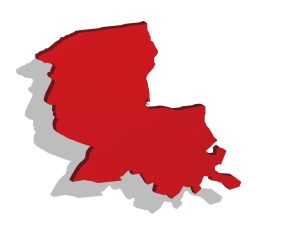Brain Waves: Bridging the Gap

March 16, 2016
Hannah Montana — a true role model — once said, “I’m tired of living a double life.” Today, I empathize. And though I wish my problem revolved around being a secret pop star, it totally doesn’t. When you’re chronically ill it can feel like you’re actually living two separate lives. There are good days and bad days: days when you can be yourself and days when you can’t leave your bed. Lately, I’ve been trying to overcome the gap between my two lives.
It’s hard to explain Postural Orthostatic Tachycardia Syndrome to people who don’t have it. My nervous system doesn’t function correctly, causing huge shifts in blood pressure when I change position from laying to sitting to standing. I’m often exhausted, dizzy, having pounding headaches and experiencing severe heart palpitations. Many undiagnosed POTS patients have been known to call 911 thinking they’re suffering from a heart attack because the indicators are so similar. I have some symptoms on a daily basis, like an irregular heartbeat and a dull headache that hasn’t gone away in years. Other symptoms come in severe bursts, episodes, which leave me completely incapacitated and occasionally hospitalized for several days. This is my “secret ill life” — not as glamorous as Hannah’s but a secret life nonetheless.
The longer I had POTS, the better I became at tucking it far away in my secret life. When I came to Tulane, I vowed to tell no one, thinking I could conceal it. I wanted people to see me as passionate, curious and fun instead of sick and fragile. But pretty soon, I started cancelling plans and the truth began to slowly, but surely, come out. I worried people’s perceptions of me would change. I worried I’d lose the reputation I’d worked so hard to create. But I soon started to realize that the isolation I felt as a result of my illness was self-created. The more I tried to hide it, the less I reached out to others. “They won’t get it,” I told myself. How could they even try to understand what they didn’t know?
As I began telling my friends, I began to bridge the gap between my dual identities of sick self and healthy self. It can be difficult, but it’s a work in progress.
Yesterday, I found myself in the health center too weak and too dizzy to move. I joked to my friends that this wasn’t exactly the place I wanted to be four days before my trip to Mexico. I expected them to be sympathetic but too busy with their own lives to give it much thought. I dozed off for a nap. When I woke up, my best friend was sitting across from me with a popsicle in hand and the latest hot gossip. I was overwhelmed. I felt sicker than ever, but I did not feel alone.
In the end, Hannah Montana revealed her secret and everything worked out alright. For many in the real world, it’s hard to do the same. It doesn’t have to be as dramatic as a double life, but we all struggle with things that affect us which we do not want to define us. Hannah wanted to be a normal girl and so do I. When I first started to get sick, I struggled with anger, confusion and feelings of being unrelatable. In the hospital, there was a wall filled with motivational sayings. One of them stuck with me: “Be kind, for everyone you meet is fighting their own battle.”
We all face our own hardships, and some of them, like lifelong illness, really suck. But I’ve started bridging the gap between my two lives by reaching out to others. It’s easy to feel alone when you have an invisible illness — especially one that you have a hard time talking about. But, as I’ve told more people about it, they haven’t looked down on me. The response has been an overwhelmingly positive, “Tell me what I can do to make it better.” The people around me may not be able to make the pain go away, but they can make me laugh and remind me of the good in the world.









Leave a Comment